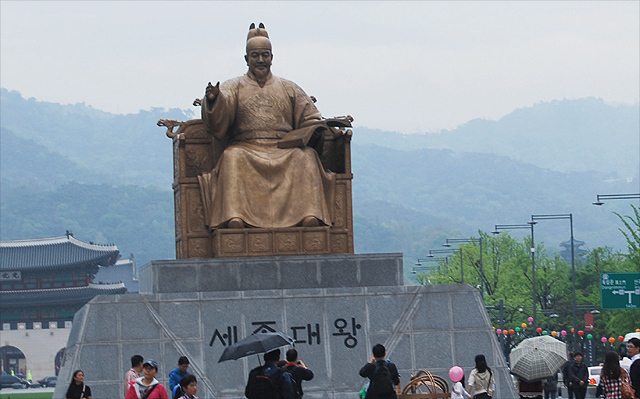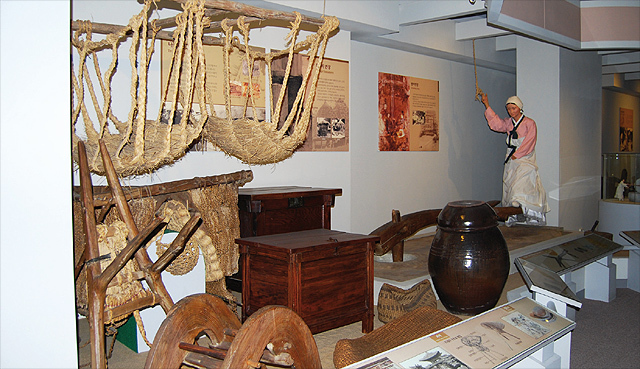South Korea is naturally beautiful
Beautiful mountains, hospitable people and a modern city. These are just a few of the things that fascinated Juliet Lukwago during a three week visit to South Korea.
Beautiful mountains, hospitable people and a modern city. These are just a few of the things that fascinated Juliet Lukwago during a three week visit to South Korea.
Regardless of what city you visit in South Korea, one thing that is easily noticeable is the kindness and hospitality of South Koreans. You will be greeted Annyong Haseyo meaning hello in the Korean language. It doesn’t matter if you comprehend it or not. However, some South Koreans do speak English since it is taught in some schools.
Seoul Incheon International Airport is believed to be the most modern in the world. It is about 54km away from Seoul city centre. The roads are spacious and well-tarmacked.
Getting around
My guide, Jim Kim, told me one of the best ways to travel long distance is by railway. Korail, which is the national railway operator in South Korea, connects passengers from the capital to virtually any destination in the country. The trains offer three different types of travel between cities: Saemaul-ho (super-express), Mugunghwaho (express) and Tong-il-ho (ordinary). The faster you go the more you will pay. Korail also offers an extensive subway system for commuters. There are ferries to neighbouring countries like Japan or China. Local, city and express buses are widely available, as well as taxis, which can be hired for one passenger or shared with others.

Some popular dishes in Korea Notice they sit on the floor
Places of interest
Changgyeong Palace, which was built in 1104 as a palace for the kings of the Koryo Dynasty, is one place you can visit to get a feel of the country’s history. You could decide to learn more about South Korea’s history at the Korean War Museum.
If you are interested in art then you can travel to the Isadong art market which offers such variety, from antiques and pottery to paintings and jewellery. It is like a fl ea market, so you need to browse through the thousands of vendors to fi nd what you are looking for.
One of Seoul’s main shopping districts is Myeongdong, where fashionable clothes are found. It is also nice for evening entertainment and relaxation.
South Korea at a glance
South Korea is offi cially the Republic of Korea (ROK) and the fl ag is called taegeukgi with a design symbolizing the Asian philosophy of yin and yang.
The red half represents the proactive cosmic forces of the yang while the blue half represents the responsive cosmic forces of the yin.
It is located on the southern portion of the Korean Peninsula, neighbouring Mainland China to the west, Japan to the east, North Korea to the north and the East China Sea and Taiwan to the south. It is one of the most mountainous places in the world with 70% of the land mass covered by mountains. Thus there are scenic hills and valleys all around for the eyes to feast on.

Statue of King Sejong with mountains in the background
Korea consists of nine provinces the capital city Seoul, the six metropolitan cities of Busan, Daegu, Incheon, Gwangju, Daejeon and Ulsan. The capital Seoul is the largest city. Out of a population of 50million, over 10million are in the Seoul. Business is conducted with the won the currency.
The national fl ower of Korea is the Mugunghwa (Rose of Sharon) which blooms all over the country from July to October. The spring season is between March and April and the warm days continue up to May, building up to the relatively hot and rainy summer season. The end of June brings monsoon rains that last until mid-to late July.
August is hot and humid before continental winds and clear dry weather arrives with autumn in late September.
National struggles
After liberation from Japan and occupation by Soviet and U.S. forces at the end of World War II, the nation was divided into North and South Korea. Forces from the North invade the south on June 25, 1950, sparking a three-year war that ended with an Armistice Agreement.
However, the two countries remain starkly different mKorean ladies in economic, democratic, religious and education systems, with a strict border between them.
South Korea is Asia’s fourth largest economy. The economy is exportdriven, with production focusing on electronics, automobiles, ships, machinery, petrochemicals and robotics.

A museum display of traditional household tools
Forests were depleted through illegal cutting after 1945 and damage during the Korean War, but the country’s reforestation programmes are addressing the damage.
Rice is the chief crop in the lowlands while barley, wheat, corn, soybeans and sorghums are grown in the uplands. Most farmers raise pigs, cows and chickens. Other crops include cotton, tobacco, fruits, potatoes, beans and sweet potatoes.
Culture
Koreans have family names within one small set like Kim, Nam, Yi, Lee, Pak, Jung, Jang, Choi, Han, Lim.
The first time I heard those names I was amazed. In almost every case one-syllable names compared to our names that can have more than three syllables. A given name is usually of two syllables, and the family name comes first. Korean women do not take their husbands’ family names though the children do.
For wedding ceremonies, a western style ceremony is usually held at a wedding hall or church with the bride wearing a white wedding dress and groom wearing a Tuxedo. Then later in the day the bride and groom have a traditional Korean ceremony in a different room of the venue in colorful traditional costumes.The traditional religions are Shamanism, Buddhism and Confucianism, but religious freedom is guaranteed. Roughly a quarter of the population is Christian.
Traditional belief in ancestral spirits is common; dead relatives are believed to stay with the family for four generations and are celebrated through ‘jerye’, special days and on the anniversary of the ancestor’s death.
Cuisine
Korean cuisine serves up unique aromas and tastes with popular seasoning such as garlic, Korean chili paste, soy sauce, fermented bean paste. Rice, soup and a few side dishes like Kim-chi make up the basic meal, served with a spoon and chopsticks. Kim-chi is present at almost every meal and there are various types of Kim-chi depending on the region and ingredients used.
Meat dishes are popular and they can be prepared right at your table over a charcoal fi re as you watch. After the meal, traditional drinks such as sikhye a sweet rice drink are served.